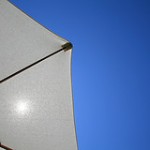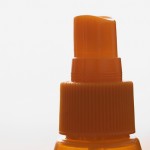by Michelle Sutton-Kerchner
The FDA got busy with sunscreen regulations. Get busy with your own summer restrictions to avoid summer burn-out …
Not long ago, generations enjoyed the sun and its goldening effects. Today, it’s one of the biggest hazards of summer. With justifiable concerns, people are no longer encouraged to, “Go outside and get some sun on your face!” Skin cancer has proven wrong this “Old Country” mentality.
Protect Your Largest Asset
The skin is the body’s biggest organ. Bernadine Healy, M.D describes it perfectly as “the great protector. ” It forms a tight barrier to waterproof on both sides. The dead, compacted, and sloughing cells add a shield of toughness. Dr. Healy equates it to “a cleverness the military would envy, the epidermis brimming with stem cells ready to spin out reinforcements as needed, and pigment-producing melanocytes to deflect skin’s number-one enemy–the sun.”
Poetic. We all have our own little squad of troops ready to fight off sun, germs, and even chilly air with a blanket of goose bumps. Respect it.
Before you hit the tanning bed, probe it with injections, or face the blazing sun, remember your skin is a force that stands between you and an often environmentally harsh world. Even those who diligently apply sunscreen must question their practices as we fall victim to misleading products. Just like that overnight cream cannot banish your wrinkles, some sunscreens that tout protection against all-things-sun cannot hold true.
Sunscreen’s Real Responsibilities
 Rigorous testing has led to recent discoveries of sunscreens that are more hype than help. Trying to outdo the competition in a saturated market of skincare, each product tries to outsell the other, even if only by price.
Rigorous testing has led to recent discoveries of sunscreens that are more hype than help. Trying to outdo the competition in a saturated market of skincare, each product tries to outsell the other, even if only by price.
Sun Protection Factor (SPF): Most slather on an SPF 50 or higher with the assumption of Ironman protection against sun. Yet, the SPF alone does not provide the more long-term benefit of skin cancer protection. It only indicates burn-free time. It is the product’s ability to protect against skin turning red. For example, if your skin typically reddens after 20 minutes of sun exposure, an SPF-30 product can protect it from redness for up to 10 hours.
The Number Game: A higher SPF does not equate to significantly stronger protection against the sun. Who knew! The numbers simply refer to the duration of protection. An SPF 15 blocks approximately 93 percent of the sun’s rays compared to an SPF 30, which blocks about 97 percent. Protection is not twice as strong but rather twice as long. SPF 30 may last for about 10 hours instead of only five with an SPF 15. The next time you’re searching the bottomless beach bags for the mega numbers, feel safe in grabbing the lesser. Just be sure to reapply more frequently.
Still, we’re creatures of habit. You may not want to chance that four percent difference, and stick with the higher numbers. We all have our security blankets.
Now that you’re protected against sunburn and sun poisoning, how do you prevent the harmful rays that may lead to skin cancer? With UVA and UVB blockage.
Broad Spectrum, and They Mean It (Now): Broad spectrum products block the sun’s cancer-causing UVA and UVB rays. Until 2012, several brands of sunscreen were falsely claiming to be broad spectrum. Unlike the telltale sting of sunburn, skin cancer is silent and initially invisible. We can only rely on the label’s assurance.
Recent testing proved that many screens provided unacceptable levels of UVA and UVB protection. New regulations require, and define, higher levels. If you purchased sunscreen prior to 2012, be cautious. The labeling cannot be trusted to convey the product’s true broad spectrum protection capability. Perhaps use this when previously you wouldn’t have bothered with any sunscreen, such as a quick backyard weeding session or a hazy day. (We all know you can get sunburn with cloud cover, but how many of us really bother to “slime up”?)
Don’t expect sunblock to be water or sweatproof. Such claims are forbidden now by the FDA. The only promise you can purchase is “water resistant” with a timeframe to reapply, usually within 40 to 80 minutes. If you’re sweating it out in the sun or enjoying extended water time, be sure to reapply often. Try to schedule fitness excursions for a shadier time of day. You won’t need to worry about the elements as much, including heat exhaustion.

A Note about Spray Products: The popularity of spray-on sunscreen cannot be discounted. It’s convenient. We love convenience when we’re hot, anxious, and squirming to get on with our next adventure. (Saying nothing of any kids in tow. Tender-skinned, moving targets dodging for cover against the pending goop-down.)
Be cautious when using sunblock sprays. They may exacerbate asthma. They also may not apply evenly, missing some spots all together. A windy day could blow the mist in eyes, including those of the applicant. You may spray it on, only to rub in by hand–either by necessity or, if you’re a parent, paranoia about the actual coverage. Is it worth the extra price?
Also, allow approximately 30 minutes for any type of sunblock to fully absorb before sun exposure. That might mean jumping rope in your garage or scenting your house with that distinct tropical blend as you dart around for poolside snacks and towels while avoiding contact with furniture. Consider this a potential warm-up for a good stretch session, which should be done anyway prior to outdoor activity that may rival a workout.
The 2012 regulations cover products designed only for sun protection. Lip balm, shampoos, lotions, and cosmetics may promise protection from the sun’s rays. Consider them complements to your overall sun-protection regimen. Just as a straw hat, they can only help. As for oversized t-shirt “protection,” think again. They’re only good for hiding dietary mishaps on your road to weight loss. Typically, a white t-shirt has an SPF of around seven. This drops to about three when wet.
Get the Look without the Worry

As for that beach-babe look, follow a healthy lifestyle of proper nutrition and adequate exercise. It is an indisputable way to feel– and look– young and vibrant. Many experts believe increased circulation obtained during exercise improves the skin’s appearance. A robust workout detoxifies the entire body and promotes cell renewal. Stress-relieving routines can reduce acne, which is proven to be linked with emotional health. Eliminating tension also helps minimize wrinkles by smoothing fine lines as the facial muscles release their own tension.
Exercise may increase delivery of nutrients to skin’s cells and provide optimum conditions for collagen production. Sweat away those fine-lines and wrinkles. And, nothing (well, almost nothing) puts on your glow more than an exercise-induced blush. There is no need to smother your skin with the latest peels or rub on a bottle tan. Forget about that stinging “base” of sunburn with which you initiate your skin at summer’s start. Hit the treadmill and get your glow on!
A Reminder about Outdoor Exercise
Research has proven a connection between sweating in the sun and skin cancer. Sweating may increase photosensitivity of the skin, which makes it more prone to sunburn and UV-associated damage. This type of exposure increases your risk of skin cancer.
If you must physically exert yourself outdoors, reduce UV exposure by doing so when the sun isn’t its strongest (before 10 a.m. or after 4 p.m.). Wear protective clothing, including hats and sunglasses, and apply water-resistant sunscreen. Clothing constructed from fabric that blocks the sun’s harmful rays becomes more popular each year. Sun-proof shorts, tops, and swimwear used to be a specialty sold at sporting goods manufacturers. Now you can find these protective duds almost anywhere, except maybe Victoria’s Secret.
Healthy Sun
 There is such a thing. The body is nourished by the sun’s warmth and brightness. It delivers needed vitamin D for bone health. It sheds light on a glum mood, making us long for it during the short days of winter. We thrive under a sunny sky, having fun in the Great Outdoors and all it offers. Enjoying it is simply a matter of protection. With the proper sunblock, sunglasses, and maybe the shade of a big ol’ oak tree, you are ready to indulge in nature.
There is such a thing. The body is nourished by the sun’s warmth and brightness. It delivers needed vitamin D for bone health. It sheds light on a glum mood, making us long for it during the short days of winter. We thrive under a sunny sky, having fun in the Great Outdoors and all it offers. Enjoying it is simply a matter of protection. With the proper sunblock, sunglasses, and maybe the shade of a big ol’ oak tree, you are ready to indulge in nature.
Sources
“Skin Deep,” by Bernadine Healy at www.usnews.com.
“Sunscreen 101: Important Changes to Sunscreen Labels,” by Trisha Torrey at www.about.com.
Image Credits
Sunglasses up: http://www.flickr.com/photos/chiropractic/6080358828/
Beach umbrella with sun: www.flickr.com/photos/11120192@N07/1048268321/
Sunscreen spray: http://www.flickr.com/photos/wjlonien/5762830392/
Shady tree: http://www.flickr.com/photos/mozzercork/144973755/
 Fitness & Wellness News Your Source for Fitness News, Wellness News, Health News, and Nutrition News!
Fitness & Wellness News Your Source for Fitness News, Wellness News, Health News, and Nutrition News!



